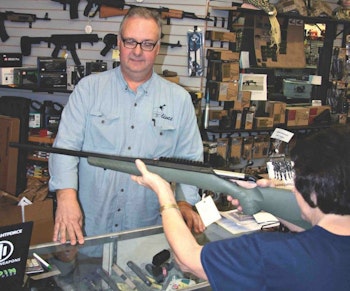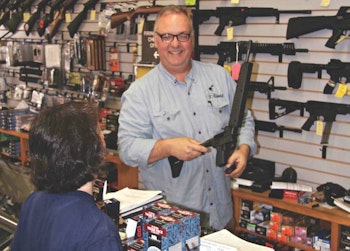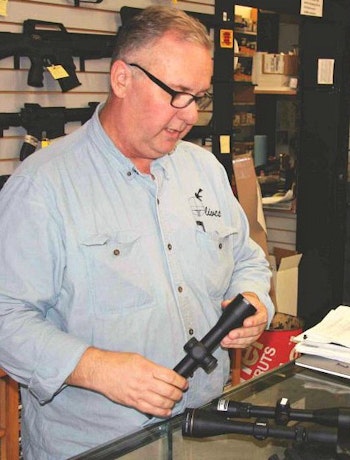Today’s outdoor consumer has more options than ever, including the bane of brick-and-mortar outlets. To keep customers coming through your doors reliably, topnotch personal service is imperative — especially for the small and/or independent dealer competing in an atmosphere ripe with big-box stores. Treat your customers poorly and they will go somewhere else, simple as that. Paramount to this impeccable service and the invaluable word-of-mouth advertisement that it generates, is properly meshing customers’ actual wants and needs with expectations during every purchase.
During a recent stint as a low-level manager in retail sporting goods, we dealt with the added burden of salesmen commissions. Sales people received a 2 percent bonus for every sale they were directly involved in, and furthermore received monthly and annual performance evaluations based on these sales numbers. Due to its competitive nature, I witnessed too many impatient sales pitches — particularly from inexperienced sales people — and even more troubling, pushing product on customers that obviously wasn’t a good fit in the pursuit of paycheck bonuses or top-salesman status.
Even with sales commission set well aside (a topic for another time) there are some glaring problems with the hasty approach. Firstly, such an approach leads to more frequent returns, something no retailer wants or needs. The customer, perhaps a reluctant buyer to begin with, takes that product into the field and soon discovers it is not living up to expectations or just isn’t what they had in mind. They bring it back, looking for a refund.
More importantly in my mind, you have also shaken that customer’s trust, and trust is something you just can’t place a value on. Loyal customers look to you for guidance, for your expertise and knowledge of the merchandise that makes the great outdoors more enjoyable or their particular pursuits more productive. You push something on them just to make a sale, and they then find it lacking or ill-suited to their needs, and that trust is eroded. This issue becomes particularly pronounced in firearms sales, as guns can’t be easily returned due to required FFL paperwork in conjunction with federal background checks. When a customer is involuntarily stuck with something they don’t want, that failing of trust can turn into outright resentment. Fair or not, I’ve certainly witnessed disgruntled customers loudly proclaim, “I’ll never shop in this store again!” You can also bet they will relate this experience (the injustice growing with each telling) to anyone who will listen. This just isn’t worth the risk, even on a slow day or desperate month of slow sales — or to make a few extra commission dollars.
While working on the sales floor of that independent sporting goods store already mentioned, I earned plenty of much-needed commission. But I also developed fiercely loyal customers who would wave off two other sales people to find me when contemplating a major purchase. They trusted me to offer sound advice, and most of all to be brutally honest. It was not only good for my personal income, but for the store as a whole.
The first thing to remember when developing a rapport with potential buyers is humans are inherently averse to being swindled — no doubt something dating back to when one Neanderthal offered to trade some gathered berries for a chunk of woolly mammoth. The natural inclination is to believe salesmen are working in their own best interests. An impatient sales pitch or canned “Can I help you?” only serves to inflate this notion. When that happens you’ll generally hear the universal, “I’m just looking.” Translated into plain English this means, “Leave me alone.” You’ll need to invest more effort to break through those natural barriers, but especially to pair a customer with the best product possible for their particular wants and needs.
Unless the customer is for some reason in a hurry (or has already made a buying decision based on past visits) take the time to slowly dissolve those barriers, allow them to relax and trust you. Greeting every customer brightly, “How are you doing today?” is a great start. Shoot the breeze, asking “How’s the hunting/fishing been?” for instance. Talk about the weather, local sports or current events. Talking allows customers to relax and decide if you’re worth interacting with. Only then should you ask if they are looking for something in particular. Should they offer that, yes, they are, resist the urge to do all the talking, opening your ears instead.
Let the customer tell you what they want, interjecting only to ask pertinent questions or move the conversation along, while always focusing on gaining a solid hold on exactly what that customer intends to use a product for, what they expect out of it, how hard or often it will be used and the kind of performance they demand, just as random examples. What you need to know to make an informed suggestion obviously depends on the product under discussion, whether that be bullets/ammo, clothing/boots, optics or camping gear. This is also where thorough product knowledge helps you not only move more merchandise, but best match customers with suitable product.
This is generally the biggest failing of low-performing salesmen. Let’s say a customer walks in looking for a GPS unit prior to big-game season. The salesman plunks a handful of options on the counter and the customer understandably begins to ask questions:
“Is this unit compatible with maps-overlay systems showing land status? I hunt where there is a lot of private property and don’t want to get into trouble.”
“How do I input GPS coordinates from my buddy’s unit, so he can show me his secret spots?”
“Can you show me how to mark a spot and then come back to it later?”
If a salesman answers, “I’m not sure,” “Good question!” or simply shrugs to any of these questions, doubt begins to fester and the sale is already lost. Put yourself in their shoes. Say you’re looking for a new cell phone or service provider. You tell the sales representative where you live and what features you need to get your work done but the sales person has no clue what to suggest. You’d walk out the door and find a business with someone who can offer definitive answers. Moral of story: do your homework.
So moving forward, you have listened carefully to a customer’s input — have asked enough questions and invested in enough follow-up prodding to eliminate obvious nonstarters. You can now slip into salesman mode. If you have not listened carefully and hand them something obviously not fitting their desires — let’s say pushing varmint ammo when the customer clearly stated they are going elk hunting, as an exaggerated example — you’re likely to be viewed as an idiot, or at least someone who just doesn’t care. No one likes to think their time is being wasted.
My basic approach, based on the intel I had gathered, was to choose an item I believed best matched their needs, and one each with lower and higher price points. The lower price point is made an option in case the “ideal” is out of the customer’s budget; the higher price point in case I could “up-sale” slightly. As a quick note, I think it’s important to avoid the subject of price early in the sales pitch — unless the customer says quite specifically they have X number of dollars in their pocket to spend — as it automatically limits possibilities. It’s also important to avoid labeling one product as “better” or “worse” than another. Saying one product is inferior to another, first, subconsciously tells a customer you sell product that isn’t good, and second, takes that option completely off the table. No one wants an “inferior” product! Instead, talk in terms of features, as in “This product has these useful features, whereas this product has different useful features.

One pet peeve is a salesman handing me a product and saying, “This is what I use.” I don’t care what you use — I’m not you! You might mention that a certain product was used on a successful outing and it worked well because of a certain set of circumstances, but indicating your tastes are universal is generally off-putting.
To illustrate such a scenario let’s say a customer is seeking a scope for their deer rifle, and let’s say, just for the sake of argument, they have their heart set on Vortex Optics because the customer mentions a friend recommended the brand. You have determined the rifle/cartridge choice, the typical ranges presented, lighting conditions most commonly encountered and the customer’s personal preferences, such as magnification parameters and front or side parallax adjustments. So you offer a budget-priced Crossfire II, a mid-priced Diamondback and a top-end Viper. You point out that all include lifetime, transferrable warrantees against any mishaps known to man. You point to the Diamondback as your top choice for their particular needs, but suggest the Viper might offer a few more minutes of viable shooting light, that the coatings are a tad tougher if they are in the habit of, say, wiping away dust with a shirttail, or even that it would make his friend jealous.
You invite that customer to take the three scopes outside and peer into the landscaping with each. They might balk at the price of the Viper, but then notice how much brighter and crisper the images are through its glass. Perhaps they outright reject the Diamondback, saying it will get them in hot water with their spouse. The Crossfire II is still on the table.
The patient approach to sales definitely requires more effort, and is generally more time consuming, but rest assured that customer will remember that extra effort and time the next time they contemplate a major purchase, or a friend asks them for a sporting goods recommendation. This is but one part of the customer overall sales equation but a vital one. No business wants to deal with returns, for worse yet, an unhappy customer.









